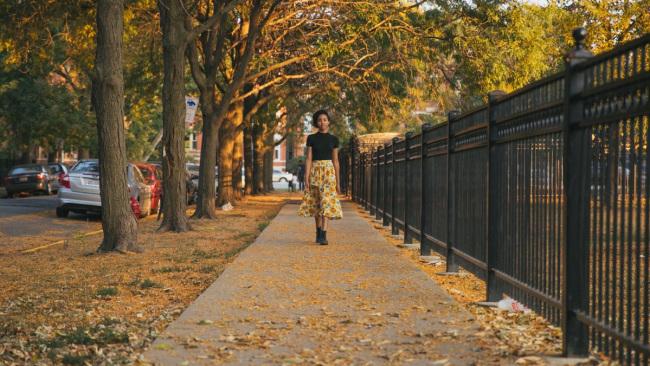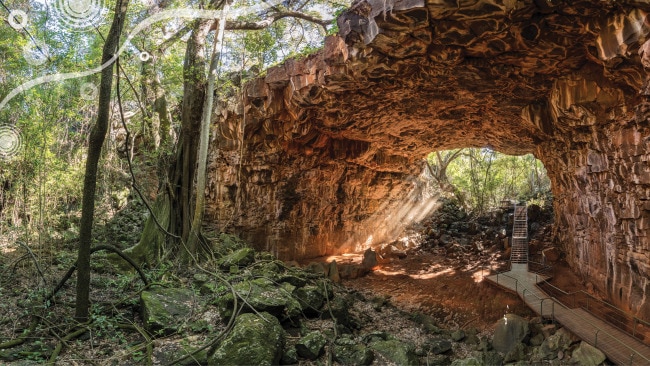A music lover’s guide to Chicago, Illinois
Chicago has some of the best record stores in the world. You won’t mind getting your hands dirty digging through these vinyl crates.

Take a stroll through Chicago’s record store-lined streets and you’ll learn more about its proud music history than you would on a typical bus tour. Ranging from spotless hipster newcomers to grungy dives that haven’t changed in decades, the spirit of blues and jazz is immortalised within crates often stacked high to the ceiling.
Jazz and blues is the thumping heart and soul of the Windy City. Tracing back to the Great Migration of the early 20th century, which brought a wave of African Americans seeking work, southern jazz and blues styles found a new form in the bars and concert halls on Chicago’s South Side. Jazz pioneers Louis Armstrong, Jelly Roll Morton and King Oliver became figureheads of the burgeoning Chicago scene, while Muddy Waters, Howlin' Wolf and Memphis Slims were among those who perfected a distinctly urban blues. As Thomas Dyja writes in his Chicago history, The Third Coast: “If you weren’t dancing to jazz on a Saturday night, you were in a joint like Smitty’s Corner on 35th Street, grinding to the blues of Big Maceo, Big Bill Broonzy, Sunnyland Slim, or Tampa Red.”
Fast forward to today, Chicago’s record stores are living museums, their wares reflecting the rise and fall of labels like Chess and Delmark Records which gave birth to Chicago blues, through to the British blues movement, and the Rolling Stones. Start at the indie haven Reckless Records in Wicker Park, then search out rare soul, funk and hip-hop at nearby Dusty Groove. A trip to Gramaphone Records is a lesson in Chicago house music history, while the overflowing stacks of “dusties” at Out Of The Past Records take you back to Chicago’s golden age of jazz and blues.
But for a little of everything in one store, there’s Dave’s Records in the Lincoln Park neighbourhood. This narrow, expertly organised space belongs to Dave Crain, who started working there over 30 years ago when it was Second Hand Tunes. In 2002, he bought the store out of bankruptcy and named it Dave’s Records. A much-loved sign on the door reads, “No CDs. Never had ’em! Never will!”
Record store owners are famously a surly bunch. The cliché of the irritable record store owner has been popularised by movies like Chicago-set High Fidelity, starring John Cusack and featuring Jack Black as a take-no-prisoners record store worker. But beneath Crain’s gruff exterior lies a gentle soul with an extensive knowledge of music and preference for quality vinyl.
“I think Chicago stores all have the personalities of their owners,” Crain says. “People often describe me as gruff, but I’m not sure if that’s just an expectation when you come in. I’m a hands-off kind of guy, and sometimes people take that as standoffishness.”
And as Crain tells it, the “No CDs” sign is a leftover from the Second Hand Tunes days, when the used CDs side of the store was next door. “It was more to save people the trouble of bringing bags of CDs in,” he says, “but I do think over time people have come to like the sign.”
Not just relegated to the “crate diggers”, Chicago’s record stores have become places for the music community and fans to gather, supporting up-and-coming DJs with in-store performances as well as hosting bigger name acts like Jack White. The spirit of jazz and blues extends beyond the walls of its record stores, ringing throughout the entire city as the Chicago Blues Festival and the Chicago Jazz Festival roll around. Both free events see living legends and new talent share the stage at Millennium Park.
Crain, who grew up in the Chicago suburbs, believes overseas interest helps keep the music traditions alive. “Everyone in Chicago knows the blues and jazz influence. You feel it here. But in general, I think as Americans we don’t treasure our musical heritage as well as other places around the world that take our music and bring it back to us.”
Visitors looking for an authentic Chicago jazz experience will find it Uptown at the Green Mill, a legendary neon-lit bar that opened in 1907 as Pop Morse’s Roadhouse. A jumping spot throughout the Jazz Age, it’s still serving live music and stiff drinks seven days a week. Andy’s Jazz Club in River North and Jazz Showcase in South Loop are also beloved spots that book the sharpest local players.
Chicago’s best-known institution for blues remains Kingston Mines. A short walk from Dave’s Records in Lincoln Park, the venue features music across two stages and lives up to its motto: “Hear blues, drink booze, talk loud, you’re among friends.” Just across the street from Kingston Mines, B.L.U.E.S. is a more intimate room with a similarly no-nonsense set-up. Meanwhile, Blue Chicago is more laidback and homely than its downtown location might suggest, with a focus on female singers.
For a local’s favourite, Crain recommends Rosa’s Lounge in Logan Square. “They have artists that aren’t your typical three-piece blues band playing Sweet Home Chicago,” he says. A show at the Chicago Theatre, which retains its 1920s opulence, is also worth a splurge. “I saw Neil Young there — just him playing solo — and it was absolutely perfect sonically,” Crain says.
Crain has seen a generational shift from behind the Dave’s Records counter. “In the Nirvana and Pearl Jam generation, kids would open the door and say, ‘Oh, it’s only records, man,’ and walk back out. They thought it was only old man music. But millennials are into vinyl.” Lollapalooza, North Coast and the Pitchfork Music Festival now draw younger music fans to Chicago, while the likes of Chance The Rapper and Vic Mensa have emerged as new hometown heroes.
No matter the era, music made in Chicago has a unique edge. “Chicago has been classified as the ‘second city’ for a long time,” Crain says, referencing the city’s fearsome industrial power in the 1890s that seemed ready to challenge New York, in population, wealth, and might (today, Chicago is actually the third largest city in the United States). “There’s a sense that’s always gritty, hardscrabble and trying to get noticed, while also not wanting to be the popular thing. I think we’re always trying to be the best Chicago we can be.”
Originally published as A music lover’s guide to Chicago, Illinois


